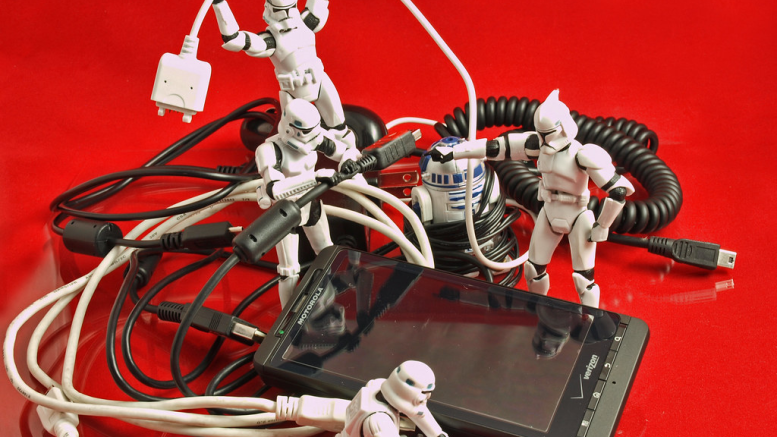Introduction: (Contextualisation)
‘Twas another day in Italy.
With salty seas, blue skies, and a blistering sun that makes you feel young again.
At least that’s what it felt like for this African American man who had felt his youth drift away from him, but a getaway with his newly wedded wife seemed to be just the cure.
They roamed the ancient walls of the historic Colosseum, ate Cannoli, rode electric scooters, but they saved the best till last.
A boat ride on the Venice waters.
The half-flooded brick walls that house the natives reflect the countless years of culture.
Not a whisper. Just the serene splashing of water on the boat edges.
The perfect spot to make love.
Until… Flash. Click. Flash… it wasn’t.
In one instant there was a blinding light that flashed before his eyes. His pupils glimmered in fear. Was it all over?
A camera flash. It was the paparazzi, and the headlines would read something like:
Kanye West & Wife’s ‘Obscenities’ in Italy cause major uproar

Controversial figure, Kanye West, was recently found in Venice to be making love with his wife in what was deemed to be ‘lewd’ circumstances. Yet, much of the negative reception towards this public encounter is based off two things:
- Public Perception
- Privacy
Public Perception
With the recount of this incident from the perspective of an ordinary African American individual, were you quick to blame and ridicule this man? Would you have gone out of your way to expose this man? I would think not. So, why was the media so quick to paint Kanye as the villain?
In 2018, The Guardian reported that news distorts people’s view of the world through a mental bug which psychologists Amos Tversky and Daniel Kahneman refer to as the Availability heuristic; where people estimate the probability of an event by the ease with which instances come to mind, and this is influenced by the recency and vivid recollection of the memory (Pinker, 2018). For example, the Guardian references the fact that “Plane crashes always make the news, but car crashes, which kill far more people, almost never do.” and yet the fear of planes far exceeds that of cars because plane crashes are more visible to the public eye. Further research led to the discovery that bad impressions and bad stereotypes are quicker to form than good ones (Baumeister et. al, 2001). With this knowledge, news sources are more inclined to publish negative articles, as Social Media Today says that “For a headline of average length, each additional negative word increased the click-through rate by 2.3%.” and in the end, if the clicks are going up, then so is the money.
From this knowledge it becomes clear that the public perception of Kanye West was painted in a negative light so as to boost monetary value for these news tabloids. With the massive growth of technology and the media, it has allowed for the exploitation of public figures, and a lack of consideration for one’s sonder. With many people overlooking the human qualities of these celebrities by bombarding them with photos and public interactions, it tests their mental fortitude as their privacy is exploited.
Privacy

Indeed, Katyal (2004) defines the implementation of the internet to be paradoxical as although it offers the consumer with “a virtual marketplace of ideas”, it ultimately provides businesses with “an insurmountable array of capacities for panoptic surveillance”. Now this example can be extrapolated and interpreted through a variety of different entities. Specifically, with reference to the scenario, where Paparazzi are seen to be this “panoptic” embodiment of surveillance, whilst content creators and influencers engage with this internet to share ideas. Yet, as Katyal goes on to say, these two ideas don’t go hand in hand, and one’s fulfilment ultimately regresses the other.
In regards to Mr West’s debacle, this zero sum game becomes clear, as the curtain to Mr West’s privacy was lifted by these people who seem to pry on any of his public appearances. So, it begs the question of whether the internet should continue to be allowed to exploit individuals or if there should be more stringent policies put in place, so as to empower pre-existing legislation.
But in order to answer this, we must ask ourselves how the internet has spiralled into this pit in the first place?

How did the Internet get to where it is today?
Initially, the internet focused on this ‘Californian Ideology’, of it being an ecosystem harvesting wealth creation and growth through the exploitation of knowledge. Yet, this ‘exploitation’ was nothing harmful at the time, but rather an embodiment of Katyal’s proposed “virtual marketplace of ideas”. This model was further recommended as a ‘free market’ model for building the ‘information superhighway’ with a ‘Utopian vision’. Although, Barbrook and Cameron emphasise that these Utopian sentiments can only come under the governance of “wilful blindness towards the ‘other’”, which involves the many minute details that obscure any naive society from becoming a Utopian – conflicting values and the many inequalities brought about in this zero sum game (Barbrook et. al, 1995).
Yet, these initial, optimistic sentiments which the Californian Ideology proposes, seem to parallel the rights of man which see:
“The free communication of ideas and opinions is one of the most
precious of the rights of man. Every citizen may, accordingly, speak,
write, and print with freedom, but shall be responsible for such abuses
of this freedom as shall be defined by law.”
(Declaration of the Rights of Man and the Citizen, France, 1789)
As mentioned, it is a right for man to engage in the “free communication of ideas”, yet this notion becomes ambiguous with regards to Katyal’s works. Through her definition of these two different entities, it seems this law applies to both the ‘paprazzi’ and the ‘content creator’, and based on that, it means one party’s engagement with free communication exploits the other party’s. Hence, enabling the internet to be a platform where these public personas are exploited.
This victimisation of the modern celebrity is explained well by Rheingold in ‘The Virtual Community (1994)’. Where she says that technology provides enormous leverage to ordinary citizens at a relatively low cost and this becomes highly relevant to this notion that Paparazzi are these ordinary individuals who have the ability to exploit ‘public’ interactions, whether good or bad through the power of the technology they have at the palm of their hands becomes a question of ethical morality.
What does this mean for the everyday Joe?
This age of the celebrity has exacerbated within our society as a whole through the influence of technology. With Instagram feeds, as well as all the other scopes of the internet, allowing people to post pictures, it becomes hard to filter these, and so, many people are left with their private lives being exposed unwillingly. Whether these are data hacks to private playstation accounts, nonconsensual photos posted on social media or leaked proprietary content, all these examples point to the way in which the internet can cause strain on our privacy.
Unicef tried its best to bolster a campaign in order to promote powerful ‘in person’ relationships, as a way of overcoming the hateful and misleading infringements into our private lives. Yet, the lack of awareness that advertisements like these get, mixed with our naivety to the capabilities the internet has in destroying one’s sense of self when their privacy is exposed causes this to be a continual issue that is in dire need of addressal.
Final thoughts
Although it’s hard to monitor and put into practice, there should ultimately be policies and legislation put in place that are avidly promoted and are highly strict in their enforcement, so as to minimise the threat of privacy invasion. This is crucial so as to mitigate psychological harm that can come to individuals when their life can unwillingly become broadcasted for all to see.
References
- Barbrook, R., Cameron, A. (1995). THE CALIFORNIAN IDEOLOGY. http://www.comune.torino.it/gioart/big/bigguest/riflessioni/californian_engl.pdf
- Gleason, C. (2023, July 10). Availability Heuristic And Decision Making. Simply Psychology. https://www.simplypsychology.org/availability-heuristic.html#:~:text=The%20availability%20heuristic%20is%20a,Tversky%20%26%20Kahneman%2C%201973).
- Hutchinson, A. (2023, March 21). New Study Finds that Including Negative Terms in Headlines Drives More Clicks. Social Media Today. https://www.socialmediatoday.com/news/new-study-finds-that-including-negative-terms-in-headlines-drives-more-clic/645632/#:~:text=%E2%80%9CAlthough%20positive%20words%20were%20slightly,through%20rate%20by%202.3%25.%E2%80%9D
- Katyal, S. (2004, April 6). The New Surveillance. SSRN https://papers.ssrn.com/sol3/papers.cfm?abstract_id=527003
- Lillian Goldman Law Library. (2008). Declaration of the Rights of Man – 1789. Yale Law School. https://avalon.law.yale.edu/18th_century/rightsof.asp
- Rheingold, H. (1993, September 20). The Virtual Community. MIT Press.
- Thurairatnam, S. (2021, July 7). How Technology Influences Social Media. Entrepreneur India. https://www.entrepreneur.com/en-in/social-media/how-technology-influences-social-media/378476#:~:text=Social%20media%20has%20gained%20much,communication%20between%20brands%20and%20clients.
- Unicef. (2016, June 11). Who do you turn to when things get tricky online? Youtube. https://www.youtube.com/watch?v=DENU7tksqHY&t=72s&ab_channel=UNICEF
Is there any Privacy in this Digital Age? © 2023 by Kyri Giannarakis is licensed under CC BY-NC-ND 4.0


